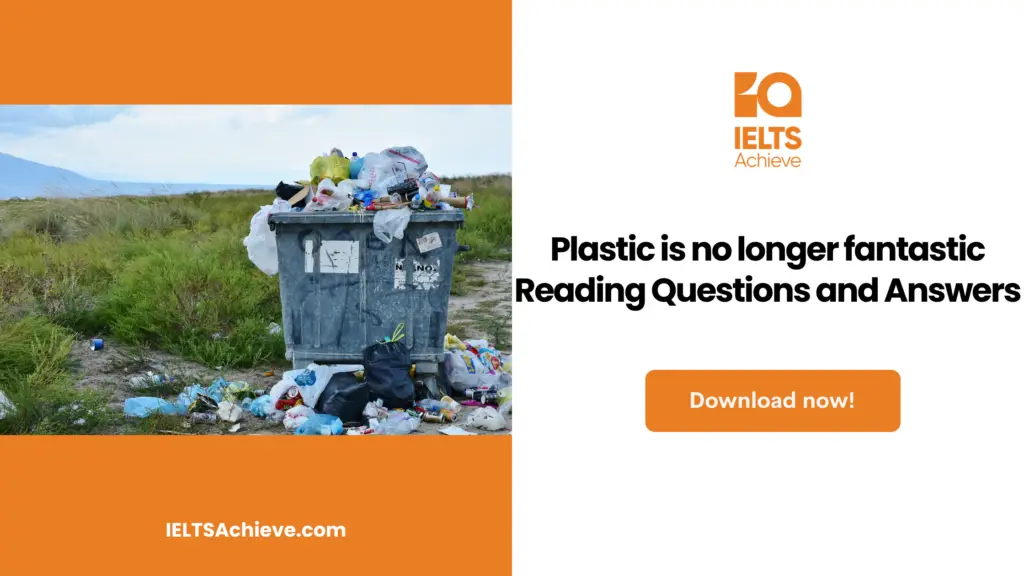The Blog post contains the following IELTS Reading Questions:
- IELTS Reading Matching Headings.
- IELTS Reading Summary Completion.
- IELTS Reading Multiple Choice Questions.
Stay informed and prepared for success – Explore our comprehensive Reading Test Info page to get valuable insights, exam format details, and expert tips for mastering the IELTS Reading section.
IELTS Reading Passage – Papyrus

Papyrus
Libraries and archives are cultural crossroads of knowledge exchange, where the past transmits information to the present, and where the present has the opportunity to inform the future. Bureaucracies have become the backbone of civilizations, as governments try to keep track of populations, business transactions and taxes. At a personal level, our lives are governed by the documents we possess; we are certified on paper literally from birth to death. And written documentation carries enormous cultural importance: consider the consequences of signing the Foundation Document of the United Nations or the Convention on Biological Diversity.Documentation requires a writing tool and a surface upon which to record the information permanently. About 5,000 years ago, the Sumerians started to use reeds or sticks to make marks on mud blocks which were then baked, but despite being fireproof, these were difficult to store. Other cultures used more flexible but less permanent surfaces, including animal skins and wood strips. In western culture, the adoption of papyrus was to have a great impact. Sheets of papyrus not only provide an invaluable record of people’s daily lives, they can also be dated using carbon-dating techniques, giving precise information about the age of the text written on them.Papyrus is strongly associated with Egyptian culture, although all the ancient civilizations around the Mediterranean used it. The papyrus sedge is a tall grass-like plant. It was harvested from shallow water and swamplands on the banks of the River Nile. Manufacturing sheets of papyrus from papyrus sedge was a complex, messy process. Pith from inside the plant’s stem was cut into long strips that were laid side by side. These were then covered with a second layer of strips which were laid at right angles to the first, then soaked in water and hammered together. The sheet was then crushed to extract the water, dried and then polished to produce a high-quality writing surface, individual sheets could be glued together and rolled up to make scrolls or folded and bound to form books.c. The earliest known roll of papyrus scroll was found in the tomb of an official called Hemeka near Memphis, which was then the capital city of Egypt, and is around five thousand years old. In 79 CE, nearly 2,000 papyrus scrolls in the library of Julius Caesar’s father-in-law were protected at Herculaneum by ash from the catastrophic eruption of administrative capital and for a thousand years generated vast amounts of administrative documentation, including accounts, tax returns and correspondence, which was periodically discarded to make room for more. Over time, a thick layer of sand covered these dumps, and they were forgotten. But the documents were protected by the sand, creating a time capsule that allowed astonishing glimpses into the lives of the town’s inhabitants over hundreds of years. Collections of documents that record information and ideas have frequently been viewed as potentially dangerous. For thousands of years, governments, despots and conquerors have resorted to burning libraries and books to rid themselves of inconvenient evidence or obliterate cultures and ideas that they found politically, morally or religiously unacceptable. One such calamity, the burning of the Great Library of Alexandria, and the papyrus scrolls and books it contained, has been mythologized and has come to symbolize the global loss of cultural knowledge.Besides their use in record-keeping, papyrus stems were used in many other aspects of Mediterranean life, such as for boat construction and making ropes, sails and baskets, as well as being a source of food. In 1969 the adventurer Thor Heyerdahl attempted to cross the Atlantic from Morocco in the boat Ra, to show that it was possible for mariners in ancient times to cross the Atlantic Ocean. Ra was made from bundles of papyrus stems and modeled on ancient Egyptian craft. As a marshland plant, papyrus sedge stabilizes soils and reduces erosion, while some investigations show that it has potential for water purification and sewage treatment.True paper was probably invented in China in the first century CE. Like papyrus, it was constructed from a meshwork of plant fibers, but the Chinese used fibers from the white mulberry tree, which yielded a tough, flexible material that could be folded, stretched, and compressed. The adoption of this paper by western cultures soon rendered papyrus obsolete.Despite dreams of paper-free societies, western cultures still use enormous quantities of paper, often in ways that it would be inconceivable to use papyrus for. As a paper substitute, the role of the papyrus sedge in western cultures has been superseded; papyrus is little more than a niche product for the tourist market. What makes papyrus noteworthy for western societies nowadays is its use as the surface upon which our ancient ancestors recorded their lives, their art and their science. In the words of the ancient Roman philosopher Pliny the Elder, it is ‘the material on which the immortality of human beings depends’.
Unlock your full potential in the IELTS Reading section – Visit our IELTS Reading Practice Question Answer page now!
Recommended Questions:
Renewable Energy IELTS Reading Question with Answer
Papyrus Reading Questions
Question 1-5
The text below has five sections, A-E.
Choose the correct heading for each section from the list of headings below.
Write the correct number i-viii in boxes 28-32 on your answer sheet.
List of Headings
i Solving the puzzle of a papyrus document
ii The importance of written records and different ways of recording them
iii The use of papyrus for a range of purposes|
iv Suggestions for future possibilities for papyrus
v How papyrus was cultivated and different manufacturing methods
vi The decline of papyrus use
vii The preservation and destruction of papyrus documents
viii The process of papyrus production
1. Section A
2. Section B
3. Section C
4. Section D
5. Section E
Ready to conquer Matching Headings questions? Click here to learn essential tips and techniques for matching headings accurately to paragraphs or sections in the IELTS Reading section.
Questions 6-10
Choose the correct letter, A, B, C or D.
Write the correct letter in boxes 6-10 on your answer sheet.
6. What was the problem with using animal skins and wood strips for writing on?
A They did not last for a long time.
B They were not easy to store.
C They were insufficiently flexible.
D They could be destroyed by fire.
7. Why did papyrus manufacturers hammer the papyrus?
A to remove water from the pith strips
B to join the layers of pith strips together
C to allow the pith strips to be easily cut
D to position the layers of pith strips at the correct angle
8. When referring to burning libraries and books, the writer is suggesting that
A information can be used for harm as well as for good.
B new ways must be found to ensure information is not lost.
C cultural knowledge depends on more than written texts.
D those in power may Wish to keep others in ignorance.
9. The writer refers to Thor Heyerdahl to illustrate the point that
A papyrus could be used as a food on long sea voyages.
B the ancient Egyptians already had advanced navigation skills.
C papyrus could be used to build boats for long sea journeys.
D the ancient Egyptians knew of the environmental benefits of papyrus
10. What does the writer conclude about papyrus today?
A It is better for the environment than using paper.
B Its significance is restricted to its role in the past.
C It is still the best writing surface for some purposes.
D More efforts need to be made to ensure it stays in use.
Ready to improve your performance in Multiple Choice Questions (MCQs)? Click here to access our comprehensive guide on how to tackle MCQs effectively in the IELTS Reading section.
Questions 11-13
Complete the summary below.
Choose ONE WORD ONLY from the text for each answer.
Write your answers in boxes 38-40 on your answer sheet.
How papyrus documents have survived
Papyrus is rich in cellulose and in some conditions will be destroyed by fungal growths or be consumed by
11. ………………. However, it can survive for long periods in an environment that is dry. It has been found in a 5,000-year-old
12. ………………….. in Egypt, and in Herculaneum, many papyrus documents were preserved following a huge
13. ……………………. in 79 CE. in the town of Oxyrhynchus, unwanted administrative documents were left on rubbish dumps which were covered with sand, preserving them for many years.
Boost your performance in Summary, Notes, Table, and Flowchart Completion tasks. Click here to explore our detailed guide and learn how to effectively complete summaries, notes, tables, and flowcharts in the IELTS Reading section.
Unlock your full potential in the IELTS Reading section – Visit our IELTS Reading Practice Question Answer page now!
Recommended Questions:
Renewable Energy IELTS Reading Question with Answer
Papyrus Reading Answers
1. Answer: ii
2. Answer: viii
3. Answer: vii
4. Answer: iii
5. Answer: vi
6. Answer: A
7. Answer: B
8. Answer: D
9. Answer: C
10. Answer: B
11. Answer: Insect
12. Answer: Tomb
13. Answer: Eruption

We hope you found this post useful in helping you to study for the IELTS Test. If you have any questions please let us know in the comments below or on the Facebook page.
The best way to keep up to date with posts like this is to like us on Facebook, then follow us on Instagram and Pinterest. If you need help preparing for the IELTS Test, join the IELTS Achieve Academy and see how we can assist you to achieve your desired band score. We offer an essay correction service, mock exams and online courses.

